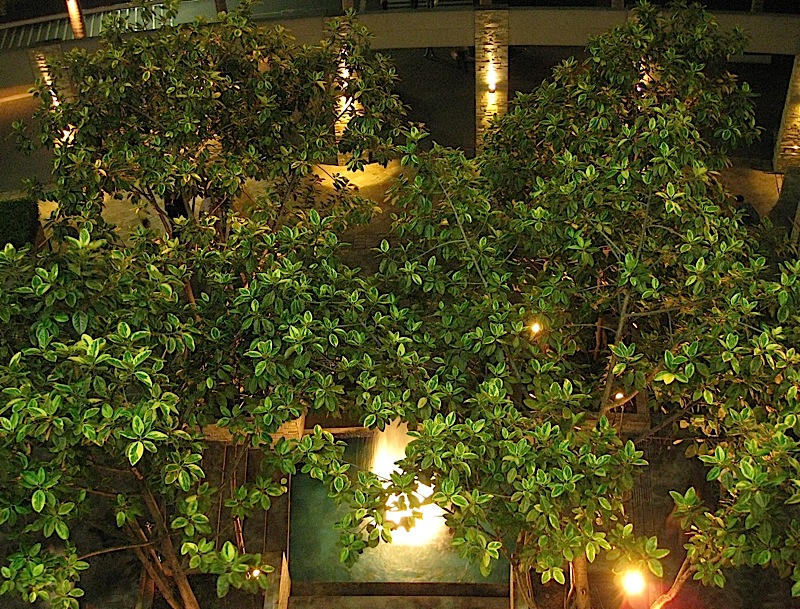Thanks to a classmate from my university days a long time ago,
Chinoy Eater (who irritatingly still looks like she's in her early twenties—no fair!), I was invited by Patricia Tan of Events 100 to "One Night Only" last March 4. The minimalist invitation only said that it was cocktails at the Hampton Room of
Astoria Plaza in Ortigas Center, Pasig City but Patricia mentioned in her email that it was also a celebration of Astoria's 9th anniversary. Intrigued, since I've never been to such an event, I asked my husband if we could go and he said yes, so we did. When we got to the hotel, the first thing that caught my eye in the Hampton Room was the wonderful light fixtures, an arboreal fantasy.

The room was set up with a small stage and a large video screen, so I immediately figured, correctly as it turns out, that it was a media event. Before the presentations, we were invited to have some cocktails. I just loved how the hotel staff laid out the forks to look like a palm frond, complete with green lights to heighten the effect.

My husband loved their
crème brûlée. Isn't the presentation just so pretty? And the mirrored surface of the cocktail tables made everything look dazzling.

The purpose of the media event was three-fold. First, Astoria launched its new logo, cleverly embedded in an ice sculpture. Second, they introduced their newest celebrity endorser,
Boy Abunda, who is one of the most famous and sought-after talk show hosts in the Philippines. And third, they announced the re-opening of
Astoria Boracay. Located in the world-famous
Boracay Island, with its fine white sand beaches, in the province of
Aklan, the resort used to be known as Boracay Gold Crowne. The Astoria group acquired the resort in 2008, extensively renovated it, and the new rooms and facilities will be available this April, just in time for summer. In the photo are Astoria Plaza Hotel Manager Ping Regalado, Boy Abunda and Vice President for Operations Vivian Ng.

For attending the event, the guests—tri-media practitioners and bloggers, all—were given laptop bags and made official members of Astoria's First Club, which means that we will be invited to anything new that Astoria has to offer (more photos for me—whee!). And the best surprise of all, we were also invited to stay at the new Astoria Boracay for three days and two nights—double whee! Would you believe we've never been to Boracay? I know, pathetic. So we are definitely looking forward to the trip later in the year. I'm already so excited! I wonder if the resort will have chairs as unusual and lovely as these ones in Astoria Plaza's lobby…




















































